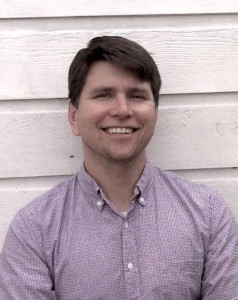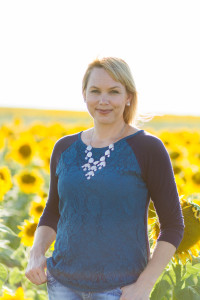
Most of us have experienced the moment of truth when thunder fractures the quiet of an afternoon and a stray lightning bolt streaks across the sky in the distance and we wonder: What are the odds that’s close enough to reach me? Sometimes we head indoors, and other times we brush it off and keep jogging or hiking or playing at the park.
Michael McQuilken, his younger brother Sean, and their sister Mary, found out in a tragic way just how unpredictable lightning can be. After summiting a granite dome in California’s Sequoia National Park in 1975, the three snapped pictures of each other’s hair standing on end. Realizing that a storm was closing in, they began descending the mountain. But just minutes later, lightning struck 12-year-old Sean, injuring him. The same bolt killed another hiker close by.
In a feature for Science News for Students, an online publication that targets middle-school and high-school readers, freelance science writer Stephen Ornes unpacked the science behind lightning strikes. His story, “Where Will Lightning Strike?,” appeared on September 16, 2014.
Here, Ornes, who lives in Nashville, Tennessee, tells Amanda Mascarelli the story behind the story and shares how he works to make complex science topics resonate with young readers. (For more on this topic, read Elizabeth Preston’s September 2015 feature on crafting science stories for kids.) (This interview has been edited for length and clarity.)
[Editors’ note: Last week, Ornes’s story won an AAAS Kavli Science Journalism Award.]
How did the idea for the story come about?
My editor, Janet Raloff, assigned it. She had a number of topics that she thought would be interesting and she came to me. I have young kids who ask about lightning, and I kind of give them a vague answer about charge and electricity, but I’ve never been able to answer them with anything very precise. So I thought that would be good for me as a parent to know as well.
How did you find your lead source, Michael McQuilken?
When I started working on the story, one of the first things that came to mind was that when I was an undergraduate physics major, one of my textbooks had this picture in it that was really disturbing. It was a picture of this woman wearing sunglasses, and her hair was standing straight up. I remembered that it had something to do with static electricity. I remember reading the caption, and it said something about lightning striking moments after this picture was taken, in the same place where the woman was standing, and someone died. That stuck with me. So when I started thinking about this story, I thought, “Well, I wonder if I can track that picture down from this 20-year-old textbook.”
I found the picture, and then I looked around online and ended up reading this story about the woman’s brother who had taken the picture, who was named Michael.
That led me to him. When I googled his name, I found out that he was a drummer and a hiker. He self-published a blog. In it is the story of when lightning struck. I got some info from the blog post, and then I followed up with Michael. He told me that the woman in the picture was his sister Mary, and he sent me the picture of him with his younger brother Sean, which we ended up using as the banner. Sean was about the same age as our target audience, which made him even more important to the story.
The story came together quickly, but largely because I found the right people to talk to in terms of making it immediate and important to our readers. Usually writing takes more work, for me at least, than this one did. Or I end up happy enough with the lead or the characters. But he was just such a good source. It was really lucky.
McQuilken’s younger brother, Sean, is notably absent from the story. Why?
In the 80s, when Sean was a young adult, he committed suicide. To me, that was just a twist too far to include in this story.
Did you approach the reporting of this story any differently, given that it was for a kids’ publication?
At the beginning of an interview for Science News for Students, I always say that our audience is nine- to fourteen-year-olds. So I try to set the stage. I may stop them and ask them to discuss their work in broader terms than they offer me initially.
In the case of this story, one of the researchers I spoke with was Colin Price at Tel Aviv University in Israel. He has done work on the connection between lightning and hurricanes, which I covered years ago for Discover. I remembered thinking how easy it was to talk to him; you know how some sources just have such a natural way of describing things that they don’t need a lot of prompting. I remembered thinking that he was a really articulate scientist. I looked him up to see if he would be appropriate.
He was kind of describing how lightning forms, and that’s when he told me it was like a huge vacuum cleaner that sucks up water vapor. It was like Bam, that’s great. He didn’t need much prompting.
It was funny, because when I went back and fact-checked it with him, I was going through some of his comments, and about that one he responded that he didn’t see how it was relevant. It wasn’t inaccurate, but he didn’t think it fit in the story.
I thought that was so interesting because he had come up with such a great comparison, and then seemed to be backing away from it. I told him that it was just that sort of comparison that I wanted.
Do you have any special tricks or prompts for helping draw those details out when they don’t come naturally to researchers?
Oftentimes kids’ stories succeed if you can start with subject matter from the beginning that lends itself to a kids’ science story. Usually the researcher is doing something that’s easy to relate to. So then you can just say, “Tell me what it’s like to be out in a thunderstorm,” or just ask them to describe a natural phenomenon, rather than, “Tell me what it’s like to look at your computer data or your office.”
My only tricks are to try to pick people from the outset that seem like they’re going to be able to talk in terms that kids are going to understand. And by that I don’t mean talking down to kids, I just mean using words that anyone can understand, that aren’t jargon, that aren’t so in the weeds that [the readers] get lost. If I get lost, I know they’re gonna get lost. It’s our job as writers to really slow it down and break it down.
Every researcher I talk to for an SNS story, I always ask, “What were you like as a kid? Did you do anything as a kid that, looking back, makes sense in light of what you do now?” And that question almost never yields interesting results. But sometimes it does.
Can you talk a bit about the actual storytelling? What approach did you use to draw in young readers?
I looked over the story to remind myself what I did to “kiddify it.” There’s a paragraph in the story about how people used to regard lightning in Greek and Norse mythology and early Hindu beliefs. I think it was even the lede at one point. I thought that was a reference point for kids. It was a touchstone, or a place to ground them to give them somewhere to stand. My son Sam was reading a book about Greek myths while I was working on this story. I think a lot of kids get really interested in mythology. If you can give them something that they recognize, then it’s easier to lead them into something new. If you can convince them that they’re already on ground that they’ve covered, then they won’t think it’s such a big step to learn something new.
How do you find the sweet spot between too much science and just enough science when writing for kids?
I have to be careful. The things that I get interested in are often not the things that the reader is going to be interested in, in terms of the science. In this story, for example, I went down a few rabbit holes, especially in looking at Phillip Bitzer’s research and digging in to learn about the National Lightning Detection Network, and the technical, physics aspects of how lightning is tracked. Little of that research ended up in the story. If some aspect of the story became its own rabbit-hole expedition, maybe that’s a good indication of something that doesn’t belong in the first story because it’s too nerdy, too far in the weeds. But maybe it gets its own story down the road.
I think writing for kids has made me a better writer, and I recommend it to everyone. It’s a helpful exercise, to write something technical and difficult for a nine-year-old, including the same content that you want in your adult story.
When I finish a first draft, it’s always way too long. I try hard not to cut descriptive passages. Instead, I’ll try and ask which of the technical-background paragraphs in particular I can cut and still hold onto the story.
I also try to be careful to bring the story back to something descriptive pretty quickly—to not overload the science, to just write simpler. The elements of story, including tension, scenes, and details about characters, can be powerful. If I can include those, the story slows down to a more natural and accessible pace.
Also, if there are too many numbers or too many measurements (and my editor, Janet, is good about prompting me on these, too) [it’s important] to say what is the size of an “x,” or what is as many as a “y,” to get a comparison in there to get some scale.
Did reporting this story change the way you interact with your kids about lightning?
Looking through the data [discussed in the story] about how many people were killed doing various activities outdoors was really disturbing to me. To the point where now, if I’m at the playground and I hear thunder, my reaction is, “Kids, get in the car,” whereas I used to think, Oh, we’re all here, we’re all playing. No one’s going to get struck. It’s so unlikely. Now, it’s like, Oh crap, there’s thunder, that means lightning can reach us. Personally, it made a difference.

Amanda Mascarelli is the managing editor of SAPIENS, an online publication launching in January 2016 that is devoted to covering anthropological science. Prior to taking on this role in May 2015, Mascarelli spent a decade as a freelance journalist. Her stories have appeared in Audubon, Nature, New Scientist, Science, Science News for Students, The New York Times, The Washington Post, Yoga Journal, and other publications. Follow her on Twitter @A_Mascarelli.


